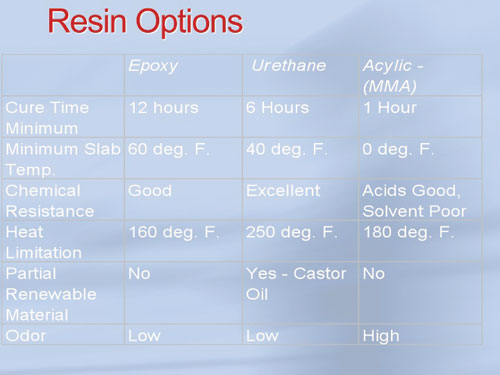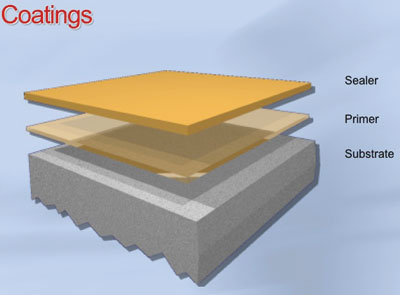Advancements and Applications in Resinous Floors and Walls
Applications of resinous flooring
With multiple product choices manufactured for different needs, resinous flooring has a wide range of applications:
Construction markets
Healthcare
Pharmaceutical/Biotech
Food & Beverage
Chemical Processing
Education
General Manufacturing
Electronics
Hospitality
Public Spaces
Interior environments
Traffic Aisles
Airport Concourses
Processing Areas
Cafeterias
Control Rooms
Operating Rooms
Packaging Lines
Classrooms
Assembly Areas
Corridors
Machine Areas
Lobbies
Resinous flooring option
When specifying resinous flooring systems, design professionals should be aware that resinous material—epoxy, urethane, and acrylic (MMA)—have different characteristics regarding curing time, heat limitation, chemical resistance, and so forth (see table of resin options in the online version of this article). For instance, acrylic (MMA) has the fastest curing time, while urethane flooring is partially renewable and excellent for chemical resistance.
 |
Flooring System Configurations
Liners, coatings, troweled mortar, broadcast systems, and terrazzo alternatives are all types of resinous flooring. Configurations vary according to specific needs such as performance requirements, withstanding high temperatures, static and non-sparking properties, withstanding high traffic and noise reduction. Fillers and components are utilized in different products to enhance performance and sustainability.
Coatings. A resinous coating is used to protect and prolong the life of the floor. Available in a wide range of finishes, pigmented or clear, epoxy and urethane formulations, coatings can be applied in conjunction with a resinous floor system, or as a coating over a concrete subfloor. Thicknesses range from 8 mls to 30 mls. A manufacturer may categorize coatings as “complementary” products.
 |









